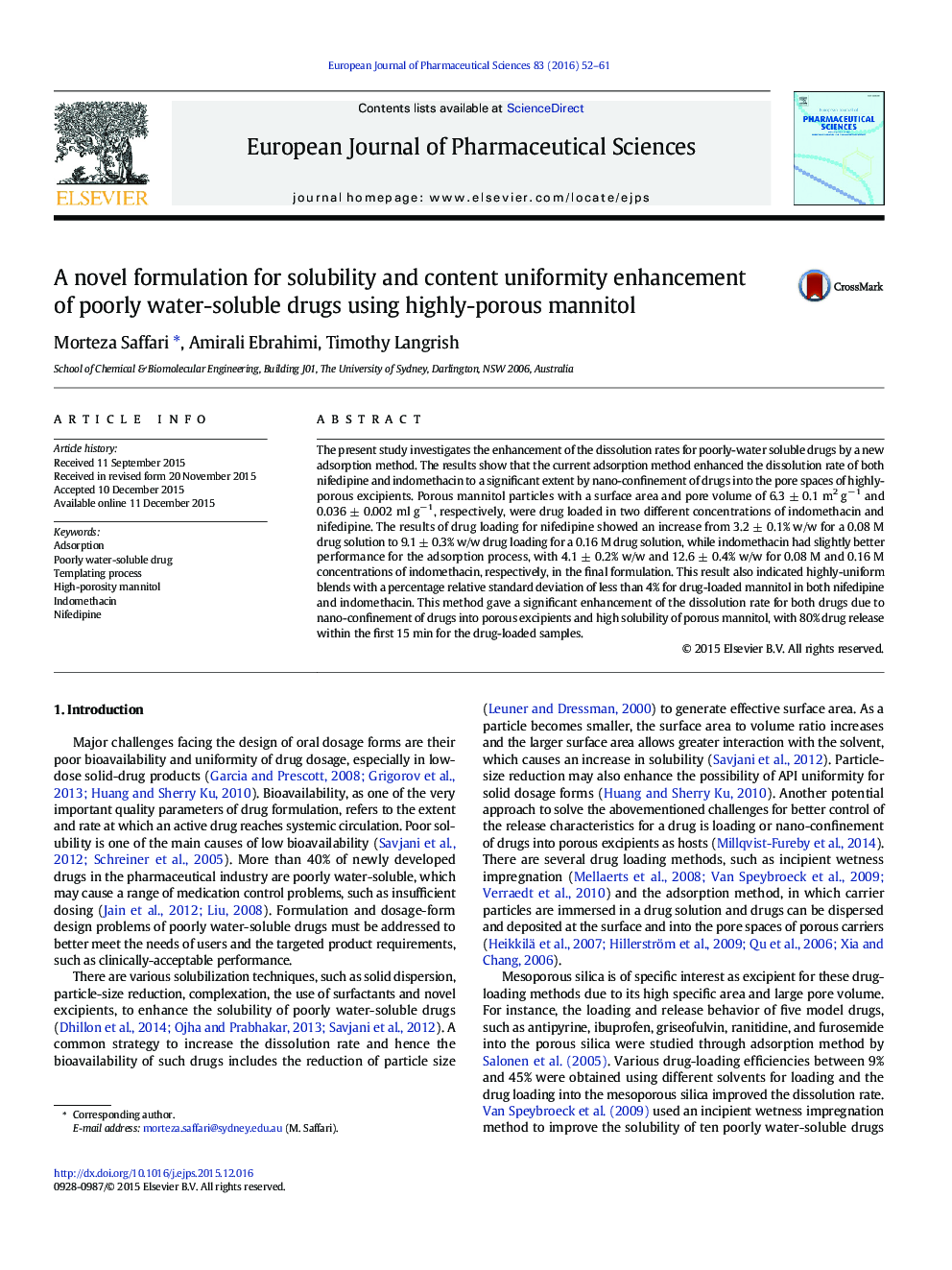| Article ID | Journal | Published Year | Pages | File Type |
|---|---|---|---|---|
| 2480149 | European Journal of Pharmaceutical Sciences | 2016 | 10 Pages |
The present study investigates the enhancement of the dissolution rates for poorly-water soluble drugs by a new adsorption method. The results show that the current adsorption method enhanced the dissolution rate of both nifedipine and indomethacin to a significant extent by nano-confinement of drugs into the pore spaces of highly-porous excipients. Porous mannitol particles with a surface area and pore volume of 6.3 ± 0.1 m2 g− 1 and 0.036 ± 0.002 ml g− 1, respectively, were drug loaded in two different concentrations of indomethacin and nifedipine. The results of drug loading for nifedipine showed an increase from 3.2 ± 0.1% w/w for a 0.08 M drug solution to 9.1 ± 0.3% w/w drug loading for a 0.16 M drug solution, while indomethacin had slightly better performance for the adsorption process, with 4.1 ± 0.2% w/w and 12.6 ± 0.4% w/w for 0.08 M and 0.16 M concentrations of indomethacin, respectively, in the final formulation. This result also indicated highly-uniform blends with a percentage relative standard deviation of less than 4% for drug-loaded mannitol in both nifedipine and indomethacin. This method gave a significant enhancement of the dissolution rate for both drugs due to nano-confinement of drugs into porous excipients and high solubility of porous mannitol, with 80% drug release within the first 15 min for the drug-loaded samples.
Graphical abstractGraphical abstract illustrates the overall adsorption approach of drug using porous mannitol.Figure optionsDownload full-size imageDownload high-quality image (127 K)Download as PowerPoint slide
